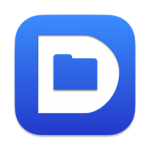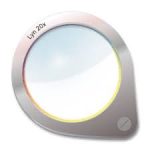Description
Name: Wine – Run Windows applications (formerly Darwine)
Version: 2.0
Released: January 24, 2017
Mac Platform: Intel
OS Version: OS X 10.5 or later
Requirement: X11 or XQuartz
Includes: Serial
Web Site: https://www.winehq.org/
Overview
Free and open source implementation of the Windows API designed to help you seamlessly and effortlessly run Windows programs on your Mac
NOTE: Unofficial Wine binaries for Mac OS X are available on the Wine.app entry (compiled by Mike Kronenberg) and on the Darwine entry (compiled by the Darwine team).
Running Windows applications on your Mac is not impossible and there are various solutions to complete the task. The first idea that comes to mind is to actually install a Windows operating on your Mac by using Boot Camp but that means that you must restart your computer to switch between the operating systems.
On the other hand, you can choose to create a virtual machine via different emulators and run the apps natively but that might prove to be time consuming to set up and a bit demanding on the resources side.
Run Windows programs seamlessly on your Mac
Wine, which stands for Wine Is Not an Emulator, takes a different approach: since Mac OS X is POSIX compliant, Wine translates the Windows API calls into POSIX calls in order to be understood by Apple’s operating system. The conversion is done on-the-fly and enables you to integrate Windows applications into your workflow in no time.
Support for a wide array of Windows programs
Wine is a free software and volunteers work to provide out-of-the-box support for different applications. You can find which apps are Wine compatible, submit requests, view statistics and much more Wine Application Database page.
The Wine developers provide the source code which you can compile yourself or you can use some of the unofficial binaries. Probably the most popular Wine binary release is Mike Kronenberg’s Wine.app which you can find Wine.app page. Additionally, you can use the Darwine team build which can be downloaded from the Darwine page.
Use Windows app without restarting your Mac
Wine is great if you need to run Windows native applications on your Mac without having to use Boot Camp and restart your system. Setting up virtual machines takes slightly more time, more resources and you might have issues if you need the Windows app to interact with your Mac OS X.
Wine simply translates the commands to a language that Mac OS X understands: this way the resources usage is reduced and you can run apps right out of the box.
What’s New in Version 2.0:
Text and Fonts
・More DirectWrite features are implemented, including:
・Drawing of underlines
・Renderer sees drawing effect associated with text segment
・Support for color fonts in COLR/CPAL format
・Initial font fallback support, builtin data for some of CJK ranges
・Support for Wine-specific font replacement registry settings
・Improved font metrics resolution in case of incomplete or ambiguous font data
・Support for EUDC font collection based on current registry settings
・Font embedding in PDF files is supported
・The RichEdit control supports bulleted and numbered lists
・Bold glyphs can be synthesized also for bitmap fonts
・Character tables are based on version 9.0.0 of the Unicode Standard
Graphics
・Window, bitmap and GDI DC render targets are implemented in Direct2D
・A wide range of optimizations make the DIB engine noticeably faster
・GDI graphic paths are reimplemented for better compatibility; they are also supported with enhanced metafiles
・Gradients are supported in GDI enhanced metafiles
・Metafiles are better supported in GdiPlus
・The macOS graphics driver supports a high-resolution (“Retina”) rendering mode; it can be enabled by setting “RetinaMode” to “Y” under HKCUSoftwareWineMac Driver
User Interface
・The clipboard support is reimplemented for better compatibility; copy-and-paste of HTML text is also improved; drag-and-drop works more smoothly
・In desktop mode, the taskbar displays running applications and allows switching between them
・Version 4 of the system tray notification protocol is implemented
・In desktop mode, some less common display resolutions like 640×400 and 1280×960 are supported
・More user interface elements scale correctly with high-DPI screens
Direct3D
・More Direct3D 10 and 11 features are implemented, including:
・Several more shader model 4 and 5 shader instructions
・Several more resource formats
・Integer vertex shader inputs
・Typeless resources
・sRGB read/write support
・Depth and stencil clears
・Depth-only draws
・Array textures
・Index buffer offsets
・Unordered access views
・Primitive restart
・The WineD3D graphics card database recognizes more graphics cards; when available, the GLX_MESA_query_renderer GLX extension is used to provide more accurate information about the graphics card
・The (system) memory layout of texture resources more closely matches Windows; this affects applications that write beyond the bounds of a MIP-level, like for example League of Legends
・The implementation of non-maskable multisample anti-aliasing is more correct; in particular, when the ARB_internalformat_query extension is available, only quality levels corresponding to specific sample counts supported by the OpenGL implementation are reported to the application; previously, reporting a large number of non-maskable multisample anti-aliasing quality levels would break some applications
・Direct3D 11 feature levels are supported
・Retrieving a GDI device context from DXGI surfaces is implemented; this is used for rendering to DXGI surfaces using GDI
・More DXGI swapchain methods are implemented, particularly those relating to switching display modes and switching to and from fullscreen
・When ARB_clip_control and ARB_viewport_array are both supported, position fixups are slightly more efficient
・The APPLE_client_storage extension is no longer used; it caused more problems than it solved
・New HKCUSoftwareWineDirect3D registry keys:
・”CheckFloatConstants” (REG_SZ); setting this to “enabled” enables additional run-time bounds checking on relatively addressed shader constant access; this helps some (broken) applications, but comes at a performance cost
・”MaxShaderModelHS”, “MaxShaderModelDS” and “MaxShaderModelCS” (REG_DWORD); these limit the maximum supported shader model for hull, domain, and compute shaders respectively, analogous to the existing “MaxShaderModelVS”, “MaxShaderModelGS”, “MaxShaderModelPS” keys; note that these shader types are new in shader model 5, so setting this to anything lower than 5 will effectively disable them
・”SampleCount” (REG_DWORD); setting this registry key will force the multisample anti-aliasing sample count to the specified value for swapchain render targets; this allows anti-aliasing to be forced on applications that do not otherwise support anti-aliasing themselves, but may have no effect or break the application depending on the specific application
DirectDraw
・Retrieving a GDI device context from a DirectDraw surface is implemented in a more accurate way; in particular, retrieving a GDI device context for a “client memory” surface will retrieve a GDI device context that’s backed by that same client memory
・A number of fixes related to vertex transformation in early DirectDraw versions have been made
D3DX
・The support for the D3DX 9 effect framework is more complete, in particular:
・There is initial support for preshaders
・Many more effect states are correctly applied
・D3DX 10 and 11 asynchronous data loaders are implemented
・The d3dx9 DLLs no longer forward to d3dx9_36, but are built from the same source instead
・The d3dcompiler DLLs no longer forward to d3dcompiler_43, but are built from the same source instead
Sound and Video
・GStreamer version 1.0 is supported for audio and video streams
・DirectSound supports downmixing from 5.1 and 4.0 formats to stereo
Internet and Networking
・The Web Services API is supported; the XML reader and writer are implemented, along with support for serializing many common data types; basic support for making SOAP calls is also included; this enables Microsoft Office 2013 online activation
・The Gecko engine is updated to the version from Firefox 47
・IDN name resolution is supported
・Various SHA hashes are supported using GnuTLS
・Looking up the host address prioritizes non-loopback interfaces, which fixes a number of networked games
・XML writing is faster for large files
・Winsock supports the IP_DONTFRAGMENT socket option
・Long URLs are handled correctly
・JavaScript performance is improved; jSON is also supported
Internationalization
・There is proper support for the Persian locale
・Uniscribe better supports right-to-left languages
・Japanese Hiragana, Katakana and full-width/half-width character mapping is implemented
64-bit Support
・64-bit applications are supported on macOS
・The Mono engine has 64-bit support
・C++ exceptions are handled correctly on x86-64, including nested exceptions and collided unwinds
・The debug registers are supported on x86-64
Built-in applications
・The ‘winebrowser’ helper application supports multiple arguments to invoke the host browser or mailer
・The ‘reg’ command-line registry utility supports the ‘query’ command, all registry data types, and has more robust command line handling
・The ‘winhlp32’ help viewer properly displays tables and images
・The ‘wineconsole’ tool better supports East-Asian fonts; color handling is also improved
Build Environment
・Import libraries can optionally be built as static libraries similarly to Windows, instead of .def files; this avoids the need for a separate .def.a library file
・The IDL compiler supports “midl_pragma warning” directives
・Cross-compilation with the Mingw-w64 Clang and ARM toolchains is supported
Kernel
・A new driver architecture is in place for supporting HID devices; this follows the Windows model, with platform-specific bus drivers and HID minidrivers; it will be used in future releases to unify support for HID devices, and potentially also for USB device support
・Loading multiple kernel drivers inside the same user-mode process is supported; this is used for HID drivers
・A directory cache is implemented, to allow returning files in the expected order and avoid relying on platform-specific system calls
・Many more API Set libraries (the oddly-named api-ms-win-* dlls) are implemented
・Interrupt 0x2d (used for debugger checks) is emulated
Miscellaneous
・Read interval timeouts are supported for serial ports
・Variables starting with ‘QT_’ are filtered from the Unix environment since they may have unwanted effects on Qt-based Windows applications
・Support for joystick button mapping and force feedback effects is improved
・Many stream classes are implemented in MSVCIRT, the old I/O stream C++ runtime
・Windows Management Instrumentation (WMI) implements some more WBEM classes
・Most remaining OpenMP functions are implemented
・Uninstallation support in MSI is improved
New External Dependencies
・libudev is used for HID device support
・GStreamer version 1.0 is used instead of version 0.10
・GnuTLS version 2.10 or higher is required for the SHA hashing functions to be supported
Configuration changes
・A number of DLLs are now built separately from a common source, instead of forwarding to a master DLL; this means that native DLL overrides need to be set on the specific version of the DLL being loaded, instead of the master one; this applies to the d3dx9_*, d3dcompiler_*, xaudio2_*, xapofx1_* and x3daudio1_* DLLs
Release numbering
・Starting with 2.0, version numbering will change:stable release updates will follow the existing scheme:2.0.1, 2.0.2, 2.0.3, etc; but the developemnt branch will drop the intermediate number:the releases will be numbered 2.1, 2.2, 2.3, etc; leading to the next stable release, which will be called 3.0

























May 20, 2020 11:22 pm
very nice
July 31, 2021 2:12 am
pay a crossover licence , 1000 years ahead